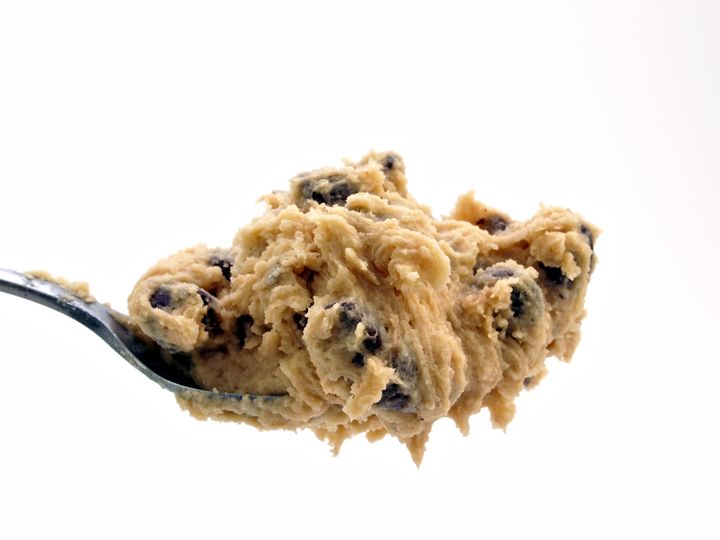
Cottage cheese has emerged from ignominy to become the trending star of social media, and it’s not a bad thing. Pureed to make high-protein “ice cream,” cookie dough and queso, good old cottage cheese is suddenly hot. But are these viral swaps really better for you?
Some of us (ahem) are old enough to remember when cottage cheese was the ’70s “it girl” of diet foods, but watched it fade into bland obscurity by the ’90s. Maybe it was the association with your mom’s diet food, paired with the ascent of cultured, gut-healthy yogurt, that pushed cottage cheese to the side of the dairy shelf. But in recent years, probiotic and even artisanal cottage cheese products have given our old friend a boost. Cottage cheese is cheap, it’s easy and it has the protein we crave.
According to registered dietitian nutritionist (RDN) Carolyn O’Neil, “As a registered dietitian, I love that cottage cheese is making a comeback. Cottage cheese is a good source of protein, with 12 to 14 grams of protein per half-cup serving. It comes in a variety of fat levels including fat free, 1%, 2% and 4%, so will range in calorie levels too.”
O’Neil pointed out that cottage cheese has both calcium and phosphorus — two minerals that are important to bone health. “One drawback is that it’s fairly high in sodium, so if you’re eating a lot of it, you might consider buying low-sodium versions,” she said.
Nutritionists weigh in on the cottage cheese swaps that have gone viral.
A new generation of protein-seekers have created new twists on cottage cheese cuisine, using TikTok and Instagram to spread them to thousands of hungry viewers.
RDN Amy Gorin, owner of Plant Based with Amy and Master the Media, weighed in on the viral protein cookie dough phenomenon, comparing one recipe that uses cottage cheese to the nutrition in Toll House edible cookie dough.
“The higher-protein, lower-calorie cookie dough has many things going for it: It provides 8 grams or satiating protein per serving (vs 1 g in the Toll House), is lower in carbs (14 g vs 25 g) and sugar (10 g vs 15 g), is gluten free and contains no added sugar if you use a protein powder that isn’t made with sugar. A few things to keep in mind, though: At 168 calories per serving, this is still a dessert to be eaten in moderation. As well, the Lily’s chocolate chips used in this recipe contain erythritol, a type of sugar alcohol, which can cause stomach upset for sensitive individuals. Would I choose the protein cookie dough over the Nestle cookie dough recipe? Yes, because I follow a gluten-free diet and the Nestle recipe is made with wheat flour. I really like the no-added-sugar chocolate chips from Hu.”
Nutrition writer Joyce Hendley, with a master’s in science in nutrition and food science (and who, since her days as a recipe developer with Weight Watchers, has always been on great terms with cottage cheese) had this to say about cottage cheese ice cream.
“It’s a big upgrade in protein, 25 g vs. 6 g in Haagen-Dazs Vanilla Bean (five times — about as much as you’d get in a 3-ounce portion of chicken breast!) and it has more calcium (216 mg vs. 180 mg), so it’s a treat with benefits ― the kind of benefits many people want.
“Using cottage cheese cuts the saturated fat to basically a negligible amount, compared with a not-great 13 g in regular ice cream (over half of what most people should get in a day). And remember, if you’re eating it as dessert or a snack, it’s probably on top of a day’s worth of other food.”
Hendley weighed in: “This is a no-brainer: Using cottage cheese allows you to use a lot less of the fat-packed dairy ingredients usually in cheesecake (um, cream cheese and sour cream). That cuts the sat-fat dramatically — from around 14 g in Sara Lee New York Style Cheesecake to a more manageable 5 g. And the savings in fat overall shaves off about 270 calories, too.
“But most importantly, cottage cheese really tastes like cream cheese, and has a silky mouthfeel when it’s pureed within an inch of its life, so with a little wizardry (like the cornstarch), it’s not much of a compromise to use it in a recipe like this.”
Hendley says using cottage cheese is brilliant here. It fills in for three traditional ingredients that our hearts don’t love: cream, butter and egg yolk. That cuts the saturated fat almost in half (4 g vs. 8 g) and really brings down the calories.
“With traditional Alfredo, you’re already getting 589 calories; almost a full meal’s worth of calories just from the sauce,” Henley said. “And, since you’re using less cheese overall, it’s a huge cut in sodium, going from almost the whole day’s recommended limit (1,580 mg) to about a third (459 mg).” The American Heart Association recommends less than 2,300 mg per day, but notes that less than 1,500 mg per day is ideal for most adults.
Cottage cheese toast is simply that — toast topped with cottage cheese, sometimes avocado, and embellished with either savory or sweet toppings.
O’Neil approves. “This is a good use of cottage cheese and is how I love to enjoy it too, as a topping on toast for a quick breakfast or lunch. Another idea is to spread some pasta sauce on a toasted English muffin and top with small curd 2% cottage cheese and sprinkle on some Italian seasoning and heat in toaster oven or under the broiler for a couple of minutes to make a mini pizza that will be a good source of protein with less fat than other cheeses.”